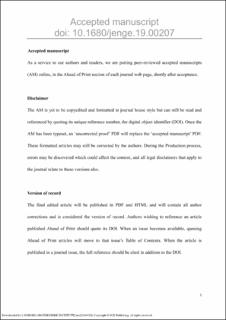Wetting-Drying Response of an Unsaturated Pyroclastic Soil Vegetated with Long-Root Grass
Peer reviewed, Journal article
Accepted version
Date
2020Metadata
Show full item recordCollections
- NGI articles [1061]
Original version
10.1680/jenge.19.00207Abstract
This paper investigates the effect of a long-root grass on the hydraulic response of a partially saturated pyroclastic soil. The work is based on both long-term monitoring under atmospheric conditions and short-term wetting/drying tests, aimed to simulate rainfall/evapotranspiration during different seasons. A 1D physical model was created, namely two identical columns were filled with a pyroclastic silty-sand, and later equipped with tensiometers and soil moisture sensors at four depths. One column was vegetated, while the second was left bare as a control. Roots growth and foliage evolution were observed for one year. The monitoring of the hydraulic variables highlighted the capability of vegetation to modify the retention ability of the rooted soil. During the drying tests, the final soil suction within the rooted zone was higher than in the bare soil, especially during summer, when plant transpiration is very high. In the wetting tests, the presence of vegetation delayed the infiltration process, reducing the total amount of water infiltrating the soil, and consequently the chances for rainfall to cause a drop in soil suction. The paper quantifies the effects of long-rooted grass, here conceived as a nature-based solution viable in landslide prone areas.
